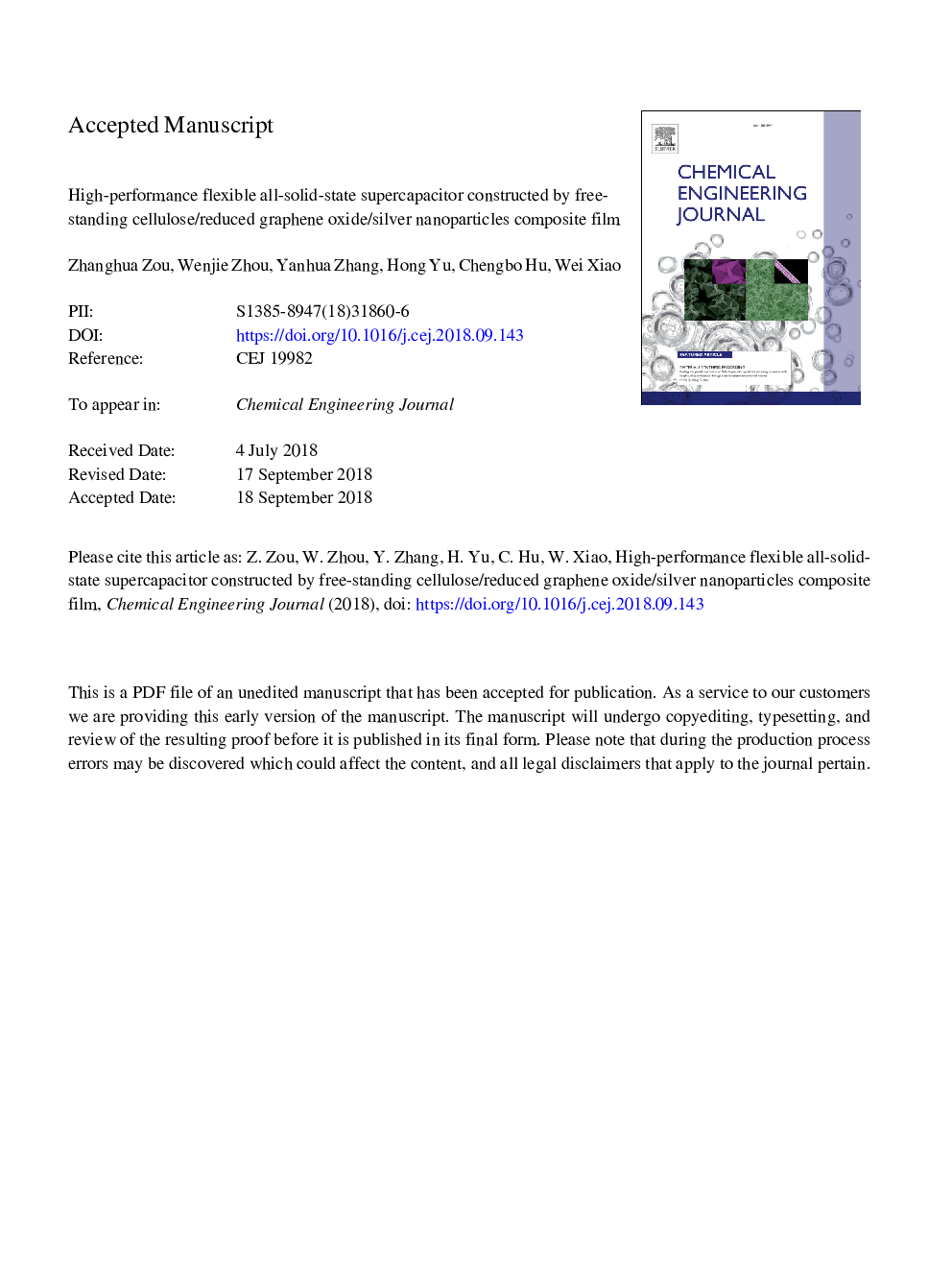| Article ID | Journal | Published Year | Pages | File Type |
|---|---|---|---|---|
| 10225129 | Chemical Engineering Journal | 2019 | 41 Pages |
Abstract
A 400-μm-thick free-standing and flexible cellulose/RGO/AgNPs composite film was fabricated by chemical reduction of cellulose/GO/AgNPs film with hot hydrazine vapor, which was obtained via the reaction of GO with silver-ammonia complex in the presence of cellulose fibers, followed by dewatering with assistance of filtration. The 400-μm-thick cellulose/RGO/AgNPs film was systematically characterized and found to be conductive enough with sheet resistance of merely 0.17â¯Î©â¯sqâ1 for direct use as electrode. When measured in a three-electrode setup, such flexible electrode exhibited outstanding supercapacitive performances with the highest areal specific capacitance of 1242.7â¯mFâ¯cmâ2 (corresponding to 31.1â¯Fâ¯cmâ3), excellent rate capability and remarkable cycling stability with the capacitance retention of 99.6% after extensive charge/discharge at a high current density of 60â¯mAâ¯cmâ2 for more than 10,000 cycles. Furthermore, a symmetric flexible all-solid-state supercapacitor cell of cellulose/RGO/AgNPs//cellulose/RGO/AgNPs was assembled. It delivered the maximum areal specific capacitance of 683.8â¯mFâ¯cmâ2 (corresponding to 8.6â¯Fâ¯cmâ3), possessed desirable rate capability, showed no substantial variation of supercapacitive behavior when being bent, and offered the highest areal energy density of 95.0â¯Î¼Whâ¯cmâ2 (corresponding to 1.19â¯mWhâ¯cmâ3), which outperformed that of many existing graphene-based symmetric flexible supercapacitors and lots of asymmetric flexible supercapacitors. The impressive electrochemical properties and facile preparation process of cellulose/RGO/AgNPs film make it a promising candidate for constructing next-generation high-performance flexible energy storage devices.
Keywords
Related Topics
Physical Sciences and Engineering
Chemical Engineering
Chemical Engineering (General)
Authors
Zhanghua Zou, Wenjie Zhou, Yanhua Zhang, Hong Yu, Chengbo Hu, Wei Xiao,
